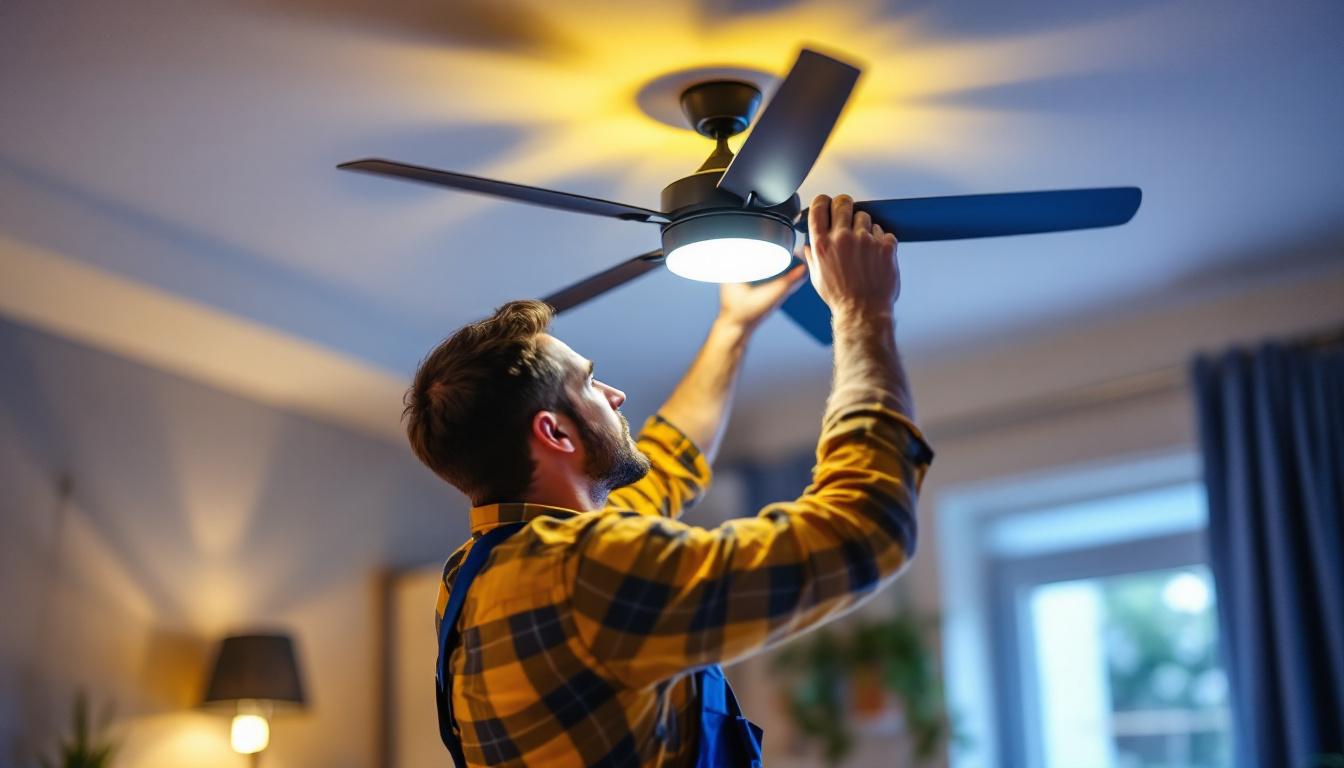
As a lighting contractor, the choice of light fixtures for commercial spaces is paramount. The right fixtures not only enhance the aesthetic appeal of a space but also influence functionality and energy efficiency. However, several common mistakes can compromise the effectiveness of lighting installations. This guide will explore these pitfalls and provide actionable insights to help lighting contractors achieve optimal results for their clients.
Lighting plays a crucial role in any commercial environment. It affects mood, productivity, and even safety. A well-lit space can enhance the overall experience for employees and customers alike. Conversely, poor lighting can lead to discomfort, decreased productivity, and even safety hazards. Therefore, understanding the principles of effective lighting design is essential for contractors.
The atmosphere of a commercial space can significantly impact customer behavior and employee efficiency. For instance, bright, cool lighting might be ideal for a retail store aiming to energize shoppers, while softer, warmer lighting may be more suitable for a restaurant looking to create a cozy ambiance. Understanding the specific needs of each space is crucial for selecting the right fixtures. Additionally, incorporating adjustable lighting options, such as dimmers or smart lighting systems, can allow businesses to adapt their environment throughout the day, catering to different activities and moods. This flexibility not only enhances the customer experience but also supports employees in maintaining focus during various tasks.
With growing concerns about energy consumption and sustainability, lighting contractors must prioritize energy-efficient solutions. LED fixtures, for example, not only consume less energy but also have a longer lifespan compared to traditional bulbs. By educating clients about the benefits of energy-efficient lighting, contractors can help them save on operational costs while promoting environmentally friendly practices. Furthermore, the integration of natural light through strategically placed windows or skylights can significantly reduce reliance on artificial lighting, creating a more pleasant and health-conscious work environment. Utilizing daylight harvesting techniques not only enhances the aesthetic appeal of a space but also contributes to the overall well-being of its occupants, making it a win-win for both businesses and the planet.
Even experienced lighting contractors can fall into common traps when selecting and installing light fixtures. Identifying these mistakes can help ensure that projects are completed successfully and to the client’s satisfaction.
One of the most significant mistakes is failing to assess the space adequately before choosing fixtures. Each commercial environment has unique requirements based on its size, layout, and purpose. For instance, a warehouse will have different lighting needs compared to an office or a retail store. Conducting a thorough assessment allows contractors to recommend fixtures that meet the specific needs of the space. Additionally, understanding the natural light sources, such as windows and skylights, can inform decisions about fixture types and placements. This holistic approach not only enhances the functionality of the lighting but also contributes to energy efficiency, as it helps in determining how much artificial light is truly necessary.
Fixture placement is critical in achieving effective lighting. Poorly placed fixtures can create shadows, glare, or uneven lighting, which can detract from the overall effectiveness of the design. Contractors should consider factors such as ceiling height, furniture arrangement, and the activities taking place in the space when determining fixture placement. Moreover, it’s essential to take into account the direction of light and how it interacts with surfaces and colors within the environment. For example, reflective surfaces can amplify brightness, while darker colors may absorb light, necessitating adjustments in fixture positioning to maintain balance and visual comfort across the area.
The color temperature of light can dramatically affect the perception of a space. Warmer tones (around 2700K to 3000K) are often preferred in hospitality settings, while cooler tones (4000K to 5000K) are more suitable for work environments. Ignoring the appropriate color temperature can lead to an uninviting atmosphere, impacting both employee productivity and customer satisfaction. Furthermore, the choice of color temperature can influence the mood and energy of a space. For instance, daylight-simulating bulbs can enhance alertness and focus in office settings, while softer, warmer lights can create a cozy ambiance in restaurants and lounges. Understanding these nuances can help contractors tailor their lighting solutions to foster the desired emotional response from occupants and visitors alike.
Once the common mistakes have been identified, the next step is to focus on selecting the right fixtures. This process involves understanding the various types of fixtures available and their respective applications.
There are numerous types of light fixtures available for commercial use, each designed for specific applications. Understanding these options can help contractors make informed choices that align with client needs. Additionally, it is essential to consider factors such as energy efficiency, maintenance requirements, and the overall aesthetic of the space when making selections.
Ambient lighting provides overall illumination for a space. Common types include ceiling-mounted fixtures, recessed lighting, and pendant lights. When selecting ambient lighting, contractors should consider the height of the ceiling and the layout of the space to ensure even distribution of light. Furthermore, the color temperature of the bulbs can significantly affect the mood of the environment, with warmer tones creating a cozy atmosphere and cooler tones promoting focus and alertness.
Task lighting is designed to illuminate specific areas where activities are performed, such as desks or workstations. Examples include desk lamps, under-cabinet lighting, and adjustable spotlights. Proper task lighting is essential in workspaces to reduce eye strain and enhance productivity. It is also important to ensure that the intensity of task lighting is adjustable, allowing users to customize their lighting conditions based on the time of day or specific tasks at hand, which can further improve comfort and efficiency.
Accent lighting is used to highlight specific features or areas within a space, such as artwork or architectural details. Track lighting and wall-mounted fixtures are popular choices for accent lighting. Contractors should consider the positioning and intensity of accent lights to create the desired visual impact. Additionally, incorporating dimmable options can provide flexibility, allowing the ambiance to shift from vibrant and engaging during events to subtle and serene for quieter moments, thus enhancing the overall experience of the space.
outdoor lighting fixtures are crucial for enhancing safety, security, and aesthetics in commercial exteriors. Options range from floodlights and wall sconces to pathway lights and decorative lanterns. When choosing outdoor fixtures, contractors should take into account the local climate and potential environmental impacts, ensuring that the selected fixtures are durable and weather-resistant. Moreover, the strategic placement of outdoor lighting can create inviting spaces for customers while deterring unwanted activity, making it an essential aspect of commercial design.
In today’s technologically advanced world, smart lighting solutions have become increasingly popular in commercial settings. These fixtures can be controlled remotely and programmed to adjust based on occupancy or time of day, offering both convenience and energy savings. Integrating smart lighting systems allows businesses to optimize their energy consumption while providing a customizable lighting experience that can adapt to various events or functions. As sustainability becomes a priority for many organizations, the ability to monitor and adjust lighting usage in real-time can significantly contribute to reducing overall operational costs.
With advancements in technology, lighting design has evolved significantly. Incorporating smart lighting solutions can enhance the functionality and efficiency of commercial spaces.
Smart lighting systems allow for greater control over lighting conditions. These systems can be programmed to adjust brightness and color temperature based on the time of day or occupancy levels. By integrating smart technology, contractors can offer clients solutions that enhance energy efficiency and user experience.
Incorporating control systems and dimming options can significantly enhance the versatility of a lighting design. Dimming capabilities allow for adjustments based on the specific needs of a space, creating a more adaptable environment. This flexibility can be particularly beneficial in multi-use spaces where lighting requirements may change throughout the day.
Lighting contractors must also be aware of the various regulations and standards that govern commercial lighting installations. Compliance not only ensures safety but also protects contractors from potential liabilities.
Each locality may have specific codes and regulations regarding lighting installations. These can include requirements for energy efficiency, fixture types, and placement. Familiarizing oneself with local codes is essential to avoid costly mistakes and ensure that installations meet legal standards.
Safety should always be a priority in lighting design. This includes ensuring that fixtures are installed correctly to prevent hazards such as electrical fires or falls. Contractors should also consider the safety of the lighting environment, ensuring that spaces are adequately illuminated to prevent accidents.
Effective communication with clients is vital throughout the lighting design and installation process. Educating clients about their options and the importance of various lighting elements can lead to more successful outcomes.
Lighting contractors should set realistic expectations regarding the capabilities and limitations of different fixtures. Clients may have specific visions for their spaces, but it is essential to communicate what is feasible within their budget and the constraints of the space.
After installation, providing clients with guidance on maintenance can help prolong the lifespan of the fixtures and ensure optimal performance. This includes recommendations for cleaning, bulb replacement, and addressing any potential issues that may arise over time.
Lighting contractors play a pivotal role in shaping the environments in which people live and work. By avoiding common mistakes, selecting appropriate fixtures, incorporating technology, and ensuring compliance with regulations, contractors can elevate their services and provide exceptional results for their clients. Continuous education and open communication will further enhance the contractor-client relationship, leading to successful projects and satisfied customers.
Ultimately, the goal is to create spaces that are not only functional but also inviting and inspiring. By adhering to best practices in lighting design, contractors can ensure that their work leaves a lasting impact on the spaces they illuminate.
Ready to take your lighting projects to the next level? At LumenWholesale, we provide lighting contractors like you with the highest quality, spec-grade lighting products at prices that can’t be beaten. Say goodbye to local distributor markups and hello to our extensive selection that meets rigorous industry standards. Plus, with free shipping on bulk orders, you can trust that you’re getting premium lighting solutions at the best value, with no hidden fees. Elevate your commercial lighting designs today and experience the best in wholesale lighting with LumenWholesale.

Discover essential best practices for lighting contractors working with smart 4-way switches.

Discover the common pitfalls lighting contractors face with LED tape flexible strip lighting and learn how to avoid them.

Discover essential tips and insights for lighting contractors to enhance their projects and client satisfaction.

Explore the pros and cons of post solar lights compared to traditional alternatives.